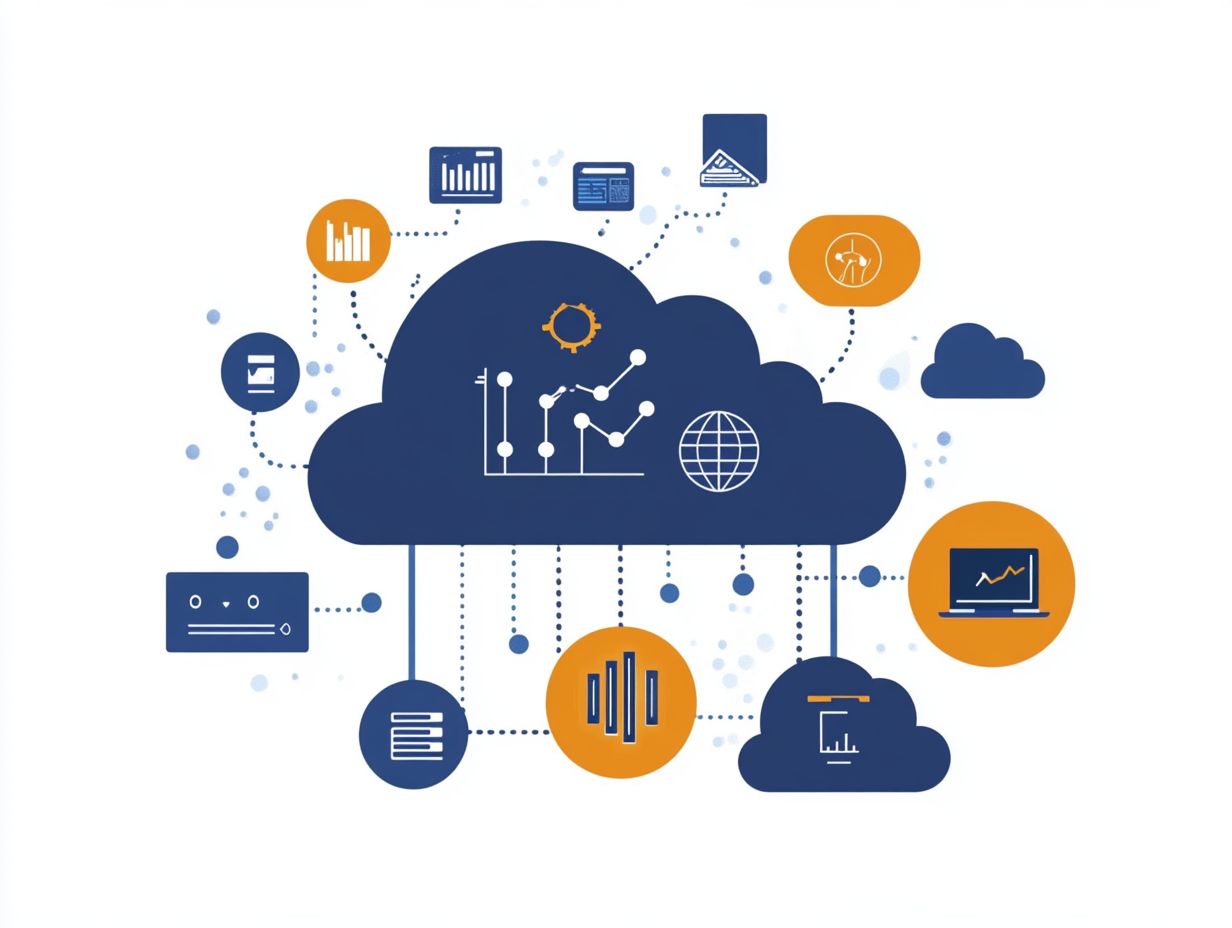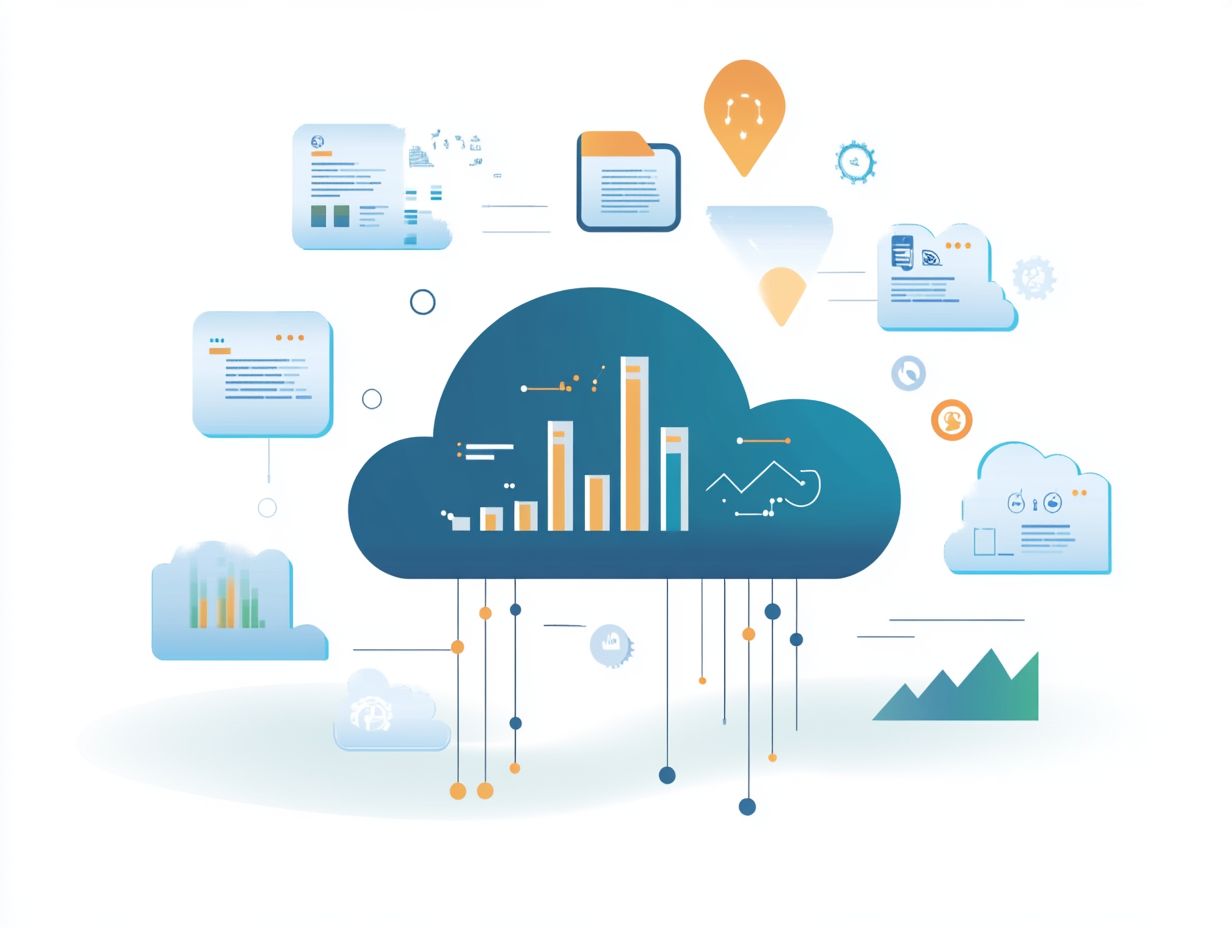5 Must-Have Features in Cloud Cost Management Tools
In today s fast-paced digital landscape, effectively managing cloud costs is essential for businesses of all sizes. As cloud services become increasingly integral to operations, the necessity for robust cost management tools has never been clearer.
This overview delves into five must-have features that will enable you to monitor, allocate, and optimize your cloud expenses with finesse. From real-time reporting to strategic budgeting capabilities, these elements empower your organization to take charge of its cloud spending.
Whether you’re just embarking on this journey or seeking to refine your existing strategy, grasping these tools can lead to substantial long-term benefits.
Contents
- Key Takeaways:
- 1. Real-Time Cost Monitoring and Reporting
- 2. Cost Allocation and Resource Tagging
- 3. Budgeting and Forecasting Capabilities
- 4. Integration with Multiple Cloud Providers
- 5. Cost Optimization Recommendations
- How Can Cloud Cost Management Tools Help Businesses?
- What Are the Key Factors to Consider When Choosing a Cloud Cost Management Tool?
- How Can Businesses Determine Their Cloud Cost Management Needs?
- What Are the Common Mistakes Businesses Make When Managing Cloud Costs?
- How Can Businesses Track and Control Their Cloud Costs?
- What Are the Long-Term Benefits of Using Cloud Cost Management Tools?
Key Takeaways:

Real-time cost monitoring and reporting allows businesses to track and analyze their cloud expenses in real-time, providing valuable insights for cost optimization.
Cost allocation and resource tagging features help businesses accurately allocate costs and identify areas for cost reduction.
Budgeting and forecasting capabilities allow businesses to set and track their cloud budget, plan for future expenses, and avoid unexpected costs.
1. Real-Time Cost Monitoring and Reporting
In today’s cloud-driven landscape, real-time cost monitoring and reporting are critical for effective cloud cost management. This approach allows you to gain visibility into your cloud expenses and optimize your financial operations with precision.
By leveraging robust cloud management tools, you can seamlessly monitor cloud usage and generate spending reports. These insights help you quickly find areas to trim unnecessary resources and understand the key metrics for cloud cost management, ultimately driving profitability.
Tools like CloudHealth and AWS Cost Explorer provide comprehensive dashboards that grant you a clear overview of your spending patterns and utilization metrics. With these insights, you can make informed decisions that enhance operational efficiency and minimize wasteful spending.
Real-time monitoring also facilitates anomaly detection, alerting you to spending spikes that could signal potential misconfigurations or security issues. IT finance teams play a vital role in this ecosystem by implementing automated measures, such as setting budget alerts or adjusting service tiers, which foster tighter budget control and ensure a proactive stance in managing cloud expenses.
2. Cost Allocation and Resource Tagging
Cost allocation and resource tagging are essential practices in cloud cost management that allow you to track your cloud expenses and optimize your spending effectively. These practices enhance financial accountability.
By adopting structured tagging strategies labeling your cloud resources you can link costs to specific projects or departments. This boosts your visibility into financial performance and allows for informed decision-making.
This clarity ensures that departmental leaders grasp their contributions to overall expenditures, fostering responsible cloud resource usage. Effective budgeting tools are vital in this process, providing frameworks for accurate cost allocation that strengthen resource governance.
This approach not only enhances efficiency but also guarantees that cloud services are used wisely, nurturing a culture of financial discipline throughout your organization.
3. Budgeting and Forecasting Capabilities

Budgeting and forecasting capabilities in cloud cost management tools are essential for your organization if you’re aiming to optimize cloud spending and accurately predict future costs. This promotes financial accountability and enhances strategic decision-making.
By utilizing various budgeting strategies offered by cloud vendors, you can anticipate expenses based on usage patterns, significantly minimizing the risk of unexpected charges. This proactive approach aids in financial planning and helps identify and eliminate wasteful expenditures.
Forecasting is crucial because it allows you to pinpoint areas where costs can be trimmed without compromising performance. Cloud management tools simplify this task by providing real-time data analytics that help maintain better budget control and facilitate informed adjustments as needed.
4. Integration with Multiple Cloud Providers
Integration with multiple cloud providers stands as a cornerstone of effective cloud cost management, enabling you to adopt a multi-cloud strategy that significantly enhances work efficiency and improves performance across diverse cloud architectures.
This approach allows you to allocate resources with precision, ensuring you harness the finest services from each provider, tailored specifically to meet your operational requirements.
By utilizing a range of platforms, you can effectively bypass vendor lock-in and balance workloads, all while minimizing costs.
A variety of tools are at your disposal to simplify this integration, including cloud management platforms that track usage patterns and automate resource allocation.
These tools guarantee that your resources are used efficiently, ultimately reducing operational expenditures while maximizing the capabilities of each cloud provider.
5. Cost Optimization Recommendations
Cost optimization recommendations are vital for businesses engaged in cloud cost management. They offer actionable insights that can lead to significant cost-saving opportunities and enhance your financial performance through adjusting resources and scaling resources as needed.
To effectively identify these optimization opportunities, you can harness performance monitoring and automation systems that provide real-time data on resource utilization and application performance. By regularly assessing key metrics, you can uncover inefficiencies, such as over-provisioned resources or underutilized services, and take the necessary steps to adjust your cloud configurations.
The importance of continuously evaluating cloud services cannot be overstated; it ensures that your spending remains aligned with ever-evolving business objectives and can adapt to market dynamics. This proactive approach not only maximizes your return on investment but also supports sustainable growth in a competitive landscape.
How Can Cloud Cost Management Tools Help Businesses?

Cloud cost management tools are essential for streamlining your financial operations, allowing you to monitor cloud expenses, enhance efficiency, and make informed decisions that align with the benefits of cloud cost management.
These tools offer real-time analytics and insights, enabling you to track usage patterns, identify spending anomalies, and effectively forecast future costs. For instance, you can establish budgets and set alerts that notify you and your stakeholders when expenditures surpass predetermined thresholds.
Imagine slashing your cloud costs by 30% in just six months! A prominent e-commerce company achieved this by implementing a cloud cost management solution, showcasing how targeted monitoring can drive financial accountability.
By optimizing resource utilization, you not only save money but also boost your overall operational efficiency, freeing up more resources to invest in innovation and growth.
What Are the Key Factors to Consider When Choosing a Cloud Cost Management Tool?
When selecting a cloud cost management tool, consider several key factors, including ways to enhance cloud cost visibility, that can significantly impact your organization’s financial health.
First, look for cost visibility, which allows you to understand where your expenses are flowing. Look for budgeting and governance tools that align with your financial processes.
Evaluating scalability is essential; you want a solution that can grow alongside your evolving needs. Don t overlook ease of use, as a user-friendly interface enhances team efficiency and productivity.
Support for multi-cloud environments is also critical, enabling you to manage expenses across various platforms without a hitch.
Each of these factors is vital for effective cloud cost management, allowing you to monitor expenditures accurately and explore 5 ways to improve cloud cost transparency for better resource allocation.
Ultimately, adopting this strategic approach doesn’t just streamline your operations; it enables you to achieve better financial outcomes by minimizing unnecessary expenses and fostering well-considered choices.
Ready to take control of your cloud expenses? Start evaluating your options today!
How Can Businesses Determine Their Cloud Cost Management Needs?
To find out your cloud cost management needs, start by analyzing your costs and usage patterns. Consider your financial requirements and budget strategies.
This means examining how resources are used in different departments. Understanding each component helps you see how it affects your overall expenses.
By breaking costs into fixed and variable parts, you can spot areas where you can save money. Use analytics tools for deeper insights into your spending trends.
Your cloud cost strategies should fit well with your financial planning. This creates a strong approach that boosts efficiency and cuts down on wasteful spending.
What Are the Common Mistakes Businesses Make When Managing Cloud Costs?

Here are some common mistakes businesses make when managing cloud costs: insufficient budgeting, lack of monitoring, and not tracking spending across services. These missteps can lead to waste and lower efficiency.
These errors can pile up quickly, leading to unexpected expenses and chaos in financial planning. Many businesses overlook the complexity of their cloud usage and fail to spot idle resources or overprovisioned services that unnecessarily inflate costs.
To avoid these challenges, deploy strong monitoring tools for real-time insights into usage. Establish clear budget controls and governance protocols to ensure accountability across all departments.
How Can Businesses Track and Control Their Cloud Costs?
You can track and control your cloud costs effectively with comprehensive management tools. These tools offer cost tracking, billing visualization, and automated actions to streamline your finances.
These strategies are vital for organizations looking to optimize cloud spending. They also help ensure that financial reports accurately reflect usage trends and projected costs.
Advanced cloud management platforms provide easy-to-read dashboards that show your billing data. This makes it simple to understand your expenses at a glance.
Automated actions help you avoid surprise charges by sending budget alerts and efficiently managing resources. These tools enable tighter budget control and informed financial decisions, leading to better resource allocation and strategic planning.
What Are the Long-Term Benefits of Using Cloud Cost Management Tools?
The long-term benefits of using cloud cost management tools are significant. These tools enhance operational efficiency, improve financial accountability, and help identify cost-saving opportunities, following the 5 steps for effective cloud cost governance that can dramatically lower your overall cloud expenses.
By forecasting spending, these tools align your IT budgets with business objectives. For example, a recent case study of a mid-sized tech company showed that integrating cloud cost management solutions led to a remarkable 30% reduction in cloud spending within just the first year.
This impressive saving empowered them to invest in innovation and employee training, fostering a vibrant culture of growth!
Real-time analytics provided by these platforms allow you to monitor resource utilization with precision. This means any surplus resources can be downsized or terminated, taking charge of your spending. This proactive strategy can dramatically stabilize your operating costs over time, paving the way for sustained financial health.
Frequently Asked Questions
What are the 5 must-have features in cloud cost management tools?
The 5 things to know about cloud cost management include essential features such as cost tracking, cost optimization, budgeting and forecasting, cost allocation, and automated alerts.
Why is cost tracking an important feature in cloud cost management tools?
Cost tracking allows users to monitor and analyze their cloud spending in real-time. This feature provides insights on where their money is being spent and helps identify unnecessary expenses.
How does cost optimization benefit businesses using cloud cost management tools?
Cost optimization enables businesses to reduce cloud spending by identifying areas where costs can be cut. This includes finding idle resources, taking advantage of discounts and spot instances, and adjusting resources to match actual needs.
What is the significance of budgeting and forecasting in cloud cost management tools?
Budgeting and forecasting allow businesses to set budget limits and predict future cloud costs based on usage trends, helping them avoid unexpected expenses.
How does cost allocation help in managing cloud costs?
Cost allocation lets businesses assign cloud costs to specific departments, teams, or projects. This provides a detailed breakdown of spending, promoting cost accountability and better decision-making.
Why are automated alerts important in cloud cost management tools?
Automated alerts notify users when their cloud spending exceeds a set threshold. This helps them stay within budget and take timely action in case of unexpected spikes in spending.
Ready to take control of your cloud costs? Explore cloud cost management tools today or contact us for expert assistance!






